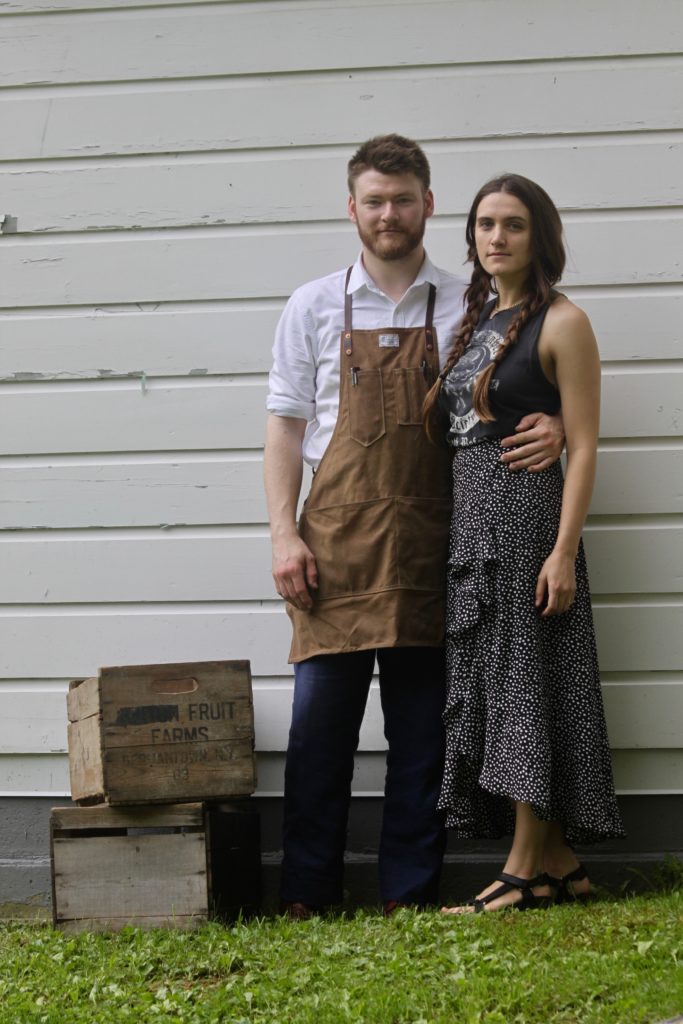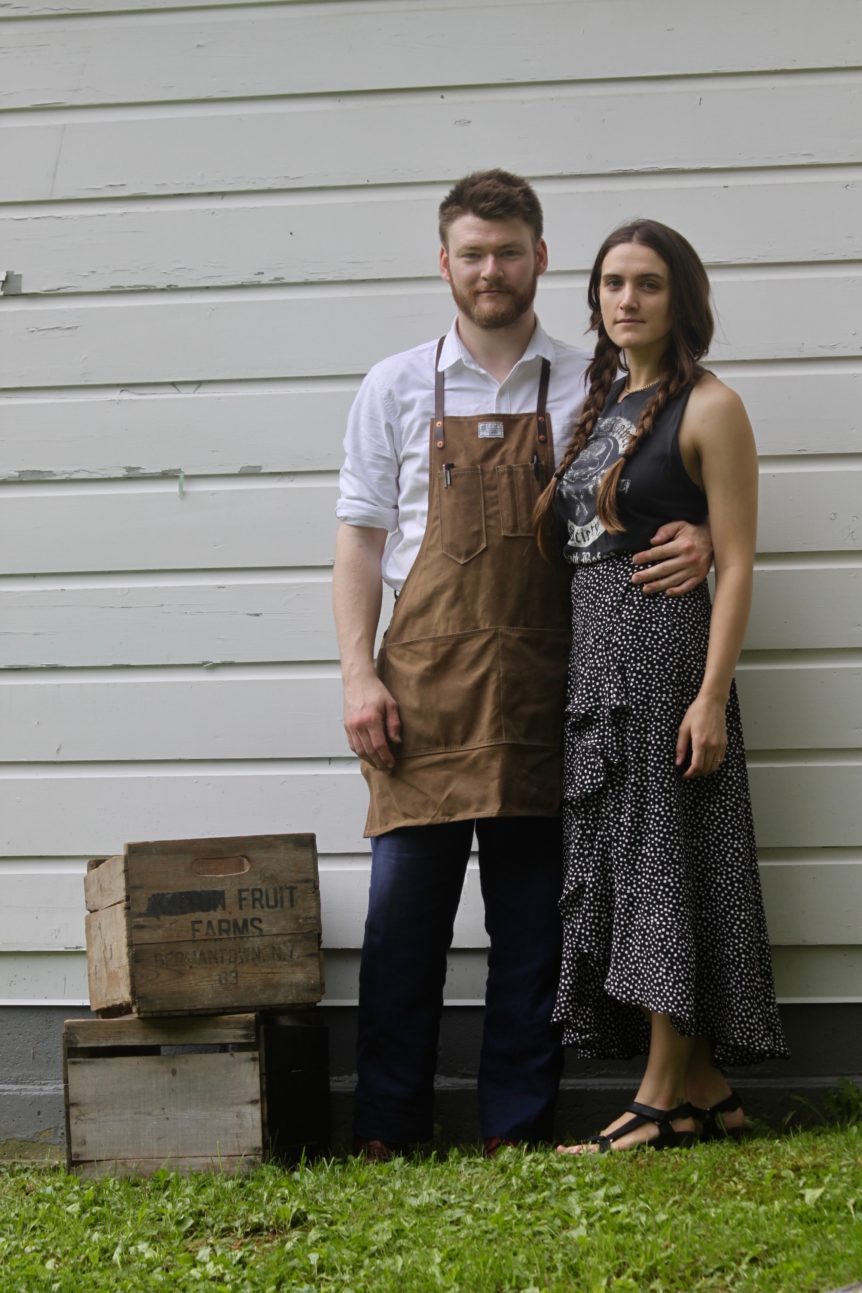“Do you read German?”
The question was asked as my folks and I, a few weeks ago, were poking around a new shop near their home in the Hudson valley called Quittner Antiques. It almost startled me. Not because the question was out of context— we were looking at a framed print of the Brooklyn Bridge with a German inscription—but because of the tone of voice in which the young woman at the shop counter posed it: a keen, downright bushy-tailed manner that seemed to promise I can tell you all about it.

Benjamin Davidson and Pippa Biddle in front of their shop, Quittner Antiques, in Germantown, New York.
That sort of experience picks me up these days. So far, it’s been a rather dreary year in the universe of this magazine, what with—among other things—museums from Philadelphia to Pasadena, California, in trouble or closing; and the loss of figures such as Richard Hampton “Dick” Jenrette, that chevalier of historic preservation. (You can meet Dick’s successor at the head of the Classical American Homes Preservation Trust in this issue’s Endnotes column: his nephew, Dr. Joseph “Buddy” Jenrette III of Charleston.)
Lately, I’ve had several other encounters with younger people as refreshing as the one at Quittner Antiques. There’s a fellow I met named Lansing Moore Jr., twenty-eight, the son and namesake of a respected New York art conservator, who works for nonprofits such as the Central Park Conservancy and is an energetic promoter of both the Young Georgians—the under-forty wing of the anglophile American Friends of the Georgian Group—and Young Folk, who are patrons of the American Folk Art Museum.
This past August at the New Hampshire Antiques Dealers Association show in Manchester, I spent some time in the booth of dealer Adam Irish. He runs a shop called Old as Adam in Portsmouth, New Hampshire, with an inventory of art, Americana, and vintage clothing. (A 2009 graduate of Middlebury College, he wrote his senior thesis on men’s neckties of the 1940s and ’50s.) In Manchester, the playful, off beat pieces Irish had on offer—a crumb sweeper and pan in the shape of hands; the “smallest known portrait of George Washington,” about the size of a pinkie finger print—were evidence of an already mature taste for the eccentric.
Back to the folks at Quittner. The shop, where they also do repairs, was opened this May by Benjamin Davidson, twenty-seven, who built up a large collection of antiques and oddities while working on historic home restoration and preservation projects in and around Philadelphia. When he moved to the Hudson valley to be closer to family, it seemed a good time to hang out a shingle. “Ben is really skilled at finding things that other people don’t see as valuable,” says his friend Pippa Biddle, twenty-six, who asked that question about language aptitude. A writer by trade, she has fond memories of time spent in an antiques-filled early eighteenth-century house in Delaware that is owned by her family. And she is, of course, a Biddle.
If Davidson is soft-spoken and probably happiest when fixing a vintage lamp, and Biddle is more effervescent, both demonstrate an engaging enthusiasm and depth of knowledge when discussing the things in their shop—from that Brooklyn Bridge print (which came from a German newspaper, c. 1870, touting the engineering marvel under construction in New York), to an African hardwood sword of great age, to a late nineteenth-century “invalid’s chair” that they traced to a Manhattan manufacturer by scouring advertisements in archival copies of the New York Times. “The chair is remarkably comfortable,” Biddle says. “We each like to sit in it with the dog and read.”
And it’s comforting, in turn, for us to know that young people like them are so at ease in the world of antiques.

